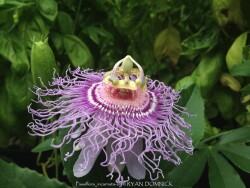
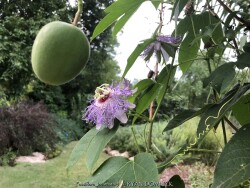
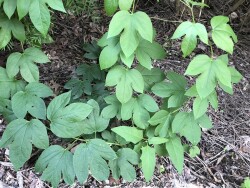
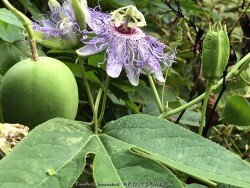
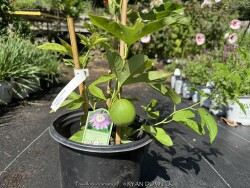
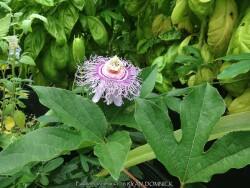
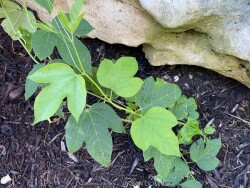
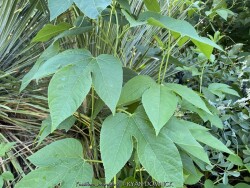
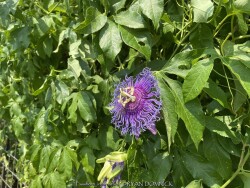
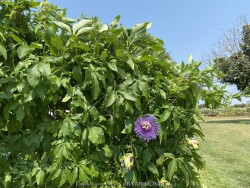
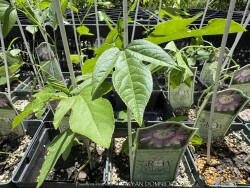

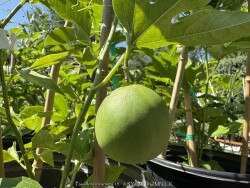
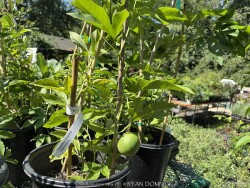
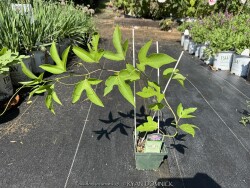
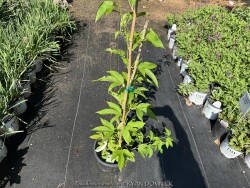
Plant Min Zone: 5b
Plant Max Zone: 9b
Sunlight: Full Sun, Part Sun
Water / Rainfall: Low, Average
Soil Quality: Average, Rich
Bloom Season: Summer, Late Summer, Fall
Flower Color: Lavender
Berry / Fruit Color: Green, Yellow
Spring Foliage Color: Green
Summer Foliage Color: Green
Fall Foliage Color: Green, Yellow
Evergreen Foliage: No
Winter Interest: No
Scented Flowers: Yes
Drought Tolerance: Medium, High
Wet-Feet Tolerance: Low, Medium
Humidity Tolerance: High
Wind Tolerance: Medium
Poor Soil Tolerance: Clay Soils, Rocky Soils, Sandy Soils
Height: 6' - 10'
Width: 2' - 3'
Growth Rate: Fast
Service Life: Very Long: 10-20 years
Maintenance Need: High
Spreading Potential: High
Yearly Trimming Tips: Trim Vines as Needed / Training May be Needed.
Plant Grouping Size: Specimen Planting of 1-3
Best Side of House: South Exposure, West Exposure, East Exposure
Extreme Planting Locations: None
Ornamental Features: Easy to Eat Edibles
Special Landscape Uses: Naturalizing, Erosion Control
Possible Pest Problems: None
Plant Limitations: Aggressive Rhizomes / Runners, May get Occasional Winter-kill, Sometimes Mistaken as Weed, Needs Frequent Pruning / Trimming, May Be Too Invasive for Garden Use, Late to Emerge or Leaf Out in Spring
Shippable in 2026: YES
Hardy Purple Passionflower (Passiflora incarnata) is also called Maypop and is native to the eastern United States including Kansas. The plant features dark green tri-lobed leaves and tropical-looking purple and white flowers. The petals and sepals include a fringe of wavy or crimped hair-like segments with very pronounced pistils and stamens. Flowers bloom in summer and are fragrant. Fleshy, egg-shaped, edible fruits called maypops appear in July-August and mature to a yellowish color in fall. Ripened maypops can be eaten fresh off the vine or made into jelly. Maypop name refers to the loud popping sound made when fruits are stepped on. It's one of those "if you don't eat it, step on it plants"! Easily grown in a wide variety of soils including heavy clay. It is usually grown on structures that it can be easily removed from each year as it dies to the ground. We have it growing in our Lawrence, KS display garden mixed with a large patch of giant reed grass (Arundo donax) that all gets cut down each year. It weaves beautifully throughout the canes and allows for easy to harvest the fruits. Funny thing is, we did not plant it: it just showed up on its own. No other plants exist within several hundred feet! Beware that this is an extremely vigorous plant that crowds out most weeds and is itself weed-like, with a very spreading growth habit mainly from root suckers coming up freely. Best planted in wild areas where it can mix with other plants; mowing around it generally stops the yearly spread in lawn areas. Spot spraying errant shoots is also effective. "Once it's there, it's there forever" plant!